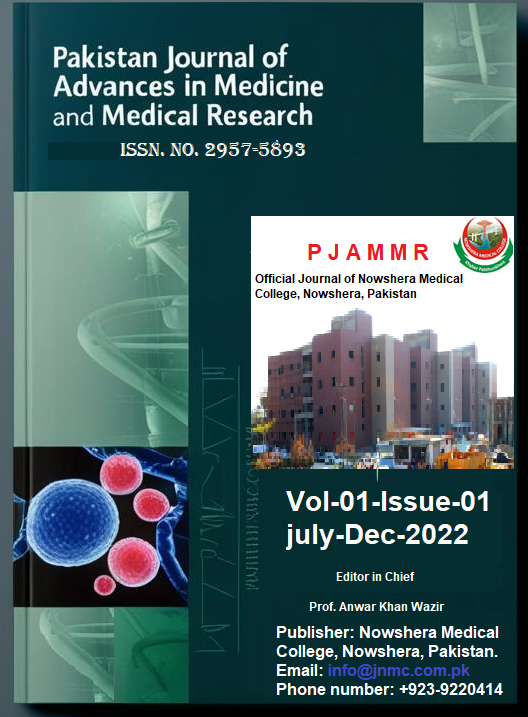The Frequency Of Tibial Shaft Fractures That Fail To Mend Properly Despite The Use Of Locking Plates. A Case Study Series
A Case Series
DOI:
https://doi.org/10.69837/pjammr.v1i01.9Abstract
Background: Tibia fractures often result from accidents and falls. Orthopedics and plastic surgeons find treatment for an open tibia fracture challenging. Several treatment options are available for tibia fractures, including conservative and surgical procedures. Locking plates are a successful therapeutic approach. However, they have problems, including nonunion.
Objective: to determine the frequency of nonunion in tibial shaft locking plates.
Study Design: A Case Series.
Place and duration of study: Department of Orthopedic DHQ Hospital Batkhala Pakistan. The Period of Study Sixty months Aug 16, 2020 - Feb 15, 2021
Materials And Methods:. This study was carried out in the Department of Orthopedics, DHQ Hospital Batkhela, Pakistan, for a duration of sixty months August 16, 2020 –February 15, 2021.A disturbing compression plate was selected as an fixation method and was used to repair the fracture. Regular contact with reporting patients utilised the contact information provided to minimise loss to follow-up. Patients mean age was 35.6 ± 8.2 yr. Nonunion was classified at the final evaluation at week 24, according to the anteroposterior and lateral X-ray images of the tibial shaft. Patients were advised to return to the hospital at once for any postoperative complications.All surgical procedures were followed up with serial radiological and clinical assessments to evaluate fracture healing, complications, and overall patient recovery.
Results: The study included patients with a mean age of 35.6 ± 8.2 years. At the 24-week follow-up, radiological and clinical assessments showed successful fracture healing in 85% of cases, while 15% exhibited nonunion. Complications included infection (5%), implant failure (3%), and delayed union (7%). Overall functional outcomes were satisfactory.
Conclusion: The study revealed that 13.3% of tibial shaft locking plates result in nonunion. This is an essential finding for orthopaedic surgeons because it highlights the risks of locking plates for tibial shaft fractures. Further research is needed to identify risk factors and strategies to reduce the incidence of nonunion.
Keywords: Nonunion, Tibial Shaft Fracture, Locking Plates
Downloads
Published
How to Cite
Issue
Section
License
Copyright (c) 2022 Pakistan journal of Advances in Medicine and Medical Research

This work is licensed under a Creative Commons Attribution-NonCommercial 4.0 International License.






